Zotac Z68ITX-A-E Wifi Review - Mini-ITX meets Z68
by Ian Cutress on September 22, 2011 10:01 AM EST- Posted in
- Motherboards
- Mini ITX
- ZOTAC
- Z68
As we often see with the 'lower tier' manufacturers, their BIOS implementations are usually a standard interface with very few specific vendor related options. Zotac's Z68 is no different - here's an American Megatrends default BIOS with options specific to this board.
The front screen doesn't give much detail - I've mentioned time again in these reviews that when I go into a BIOS I want the most important info (CPU, speed, voltages, fan speeds, memory size and timings) when I go straight in. So far, only ASUS have the best version of this, and to be honest, it shouldn't take BIOS engineers that long to add these features in.
There are usually two types of BIOS - ones that have every option under the sun included in them, and others which are essentially stripped bare so users cannot fiddle with too many settings. The Zotac Z68ITX-A-E falls sort of into the middle - there's basic overclocking options that are easy to find and implement, and basic fan controls, but nothing too involved, such as 'auto OC' options.
In terms of overclocking options, in the CPU overclock menu, both SpeedStep and Turbo Boost have to be enabled in order to change any overclock options. There's no ability to underclock the voltage either - the only option is to increase a CPU Turbo voltage offset, rather than select an absolute voltage. The only voltages changeable are the CPU Turbo offset, the memory voltage, PCH voltage, additional graphics voltage - no others like PLL are available to be adjusted.
There are a couple of overclock issues I found. Despite not having a setting to implement XMP memory profiles, if you select a memory speed such as 2133 MHz, if you then reselect back to 'Auto', the board will boot at 2133 rather than any 'auto' setting. This memory speed is also kept between CMOS resets and resetting the BIOS back to defaults, meaning the user has to go back and manually adjust the memory speed to get an 'auto' value.
CPU fan controls are limited, given that there are only two fan headers on board. By default, the CPU fan has a ramping scheme involved, and the SYS fan is stuck at 80%. Unfortunately, even with user intervention, the options will not allow more than 80% speed. As there isn't any fan software in the OS, this is the user limit.
Multi-monitor setups with the integrated graphics have to be enabled in the BIOS, as well as changing the mini-PCIe into an mSATA. Thankfully this BIOS allows an override for a quick single boot from a separate device without having to change the boot order.
Overclocking
Unfortunately, this motherboard is seriously let down by the overclocking. Some of this is expected - we're dealing with a mini-ITX which historically doesn't support that much overclocking, especially on high performance platforms, but the Zotac does fall short in almost all areas.
The first thing of note is that the Turbo mode on the Zotac board is not properly implemented as per Intel specifications by default. Normally, on my i5-2500K CPU, it has a 33x base multiplier, and increases by 4x (to 37x) under single threaded load, to 1x (to 34x) under multithreaded load. Due to how this motherboard works, that 4x turbo boost is applied no matter what the load in the OS. This naturally provides the consumer with a natural boost on multithreaded applications whilst at stock speed over every other board available for the Cougar Point platform. The rebuke is that it makes it unfair against other manufacturers, as in order to beat this board, will also provide out-of-spec capabilities by default.
In terms of overclocking the CPU, the options are limited - in terms of voltage, only a positive offset is applicable (thus no underclocking on the voltage). The CPU multiplier is a simple adjust, but both SpeedStep and Turbo Boost have to be enabled in order for an overclock to be used (otherwise the CPU defaults to 33x in the OS). Having these two enabled naturally introduces instability to an overclocked system as the system will reduce the CPU clock and voltage when not under load - when the margins are larger than Intel specifications, there's a chance that the CPU could initiate the clock before the voltage, causing the system to lock up, which is what we see:
The CPU successfully booted and was stable at a 44x multiplier, but anything above that refused to boot. At 44x, the full multithreaded load voltage was 1.32 V, so I applied a +100 mV offset (to lead to 1.42 V, my standard OC voltage for Cougar Point reviews). However the system would lock up after finishing any CPU intensive benchmark, probably due to this voltage change when the CPU clocks back down. By upping the power limits, it was also unstable in this format, leaving 44x the best CPU overclock possible. This is relatively disappointing for a Cougar Point motherboard given what we've seen previously, however this is a mini-ITX with lots of additions, so I was kind of expecting this, however it is in contrast to the 'Super Overclock' motif on the board itself. Given this motif, it was disappointing not to see an easy 'OC' mode with predefined speeds, as seen on other manufacturers boards.
In terms of memory, the board has the option to change from 1066 to 2133 MHz. There is a small issue though as mentioned above - if you select any speed on manual, then switch back to auto, the board would attempt to boot at the speed you selected, rather than just an automatic speed. There is also no option to apply any XMP profiles for the memory, which should be a BIOS standard, nor is there an option to adjust the command rate of the memory in the sub-timing options. The memory voltage can be changed in both a positive and negative offset, but no absolute values are given. There was some slight issues at 2133 MHz though - every so often, the board would apply DDR3-2133, but not any CPU overclock applied, resulting at 33x at all loads.
For the iGPU overclock, there are only three options which make it simple - Turbo iGPU speed, additional iGPU voltage, and an iGPU Current Limit. By applying no additional voltage and merely increasing the iGPU clock, I got the following results on our Metro 2033 settings:
Stock: 18.2 FPS
1400 MHz: 21.4 FPS
1500 MHz: 22.3 FPS
1600 MHz: 23.1 FPS
1700 MHz: Fail
In an attempt to mix all these overclocks, I tried applying them all at once - a 44x multiplier, 2133 MHz memory and 1600 MHz GPU. Unfortunately, at these clocks, the system would lock up at the very start of Metro 2033. After changing around the settings, it seems that mixing the iGPU and CPU overclock leads to a large enough power draw to cause the lockup.
Ultimately, it seems this board works well at stock (with that out-of-spec CPU speed in multithreaded), but not so well in any overclocked mode.


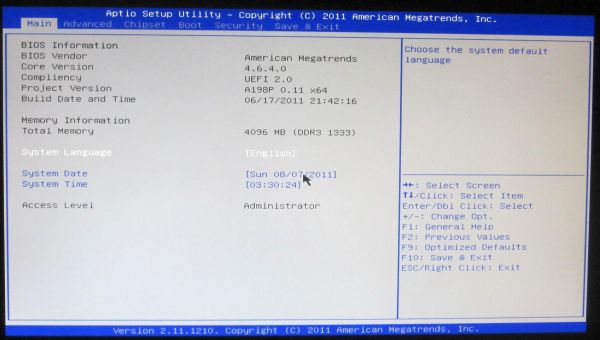
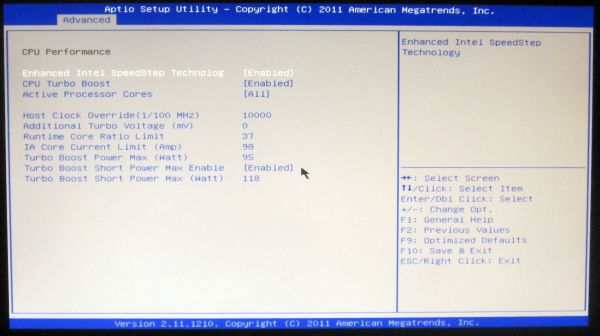
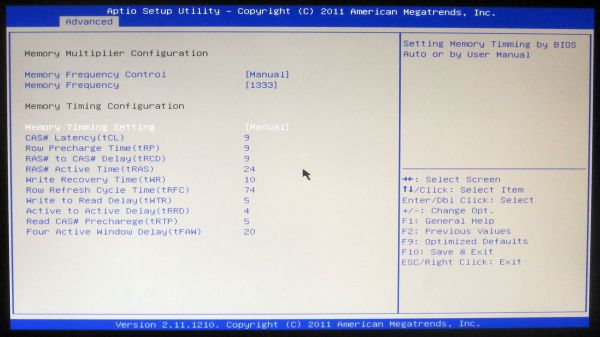
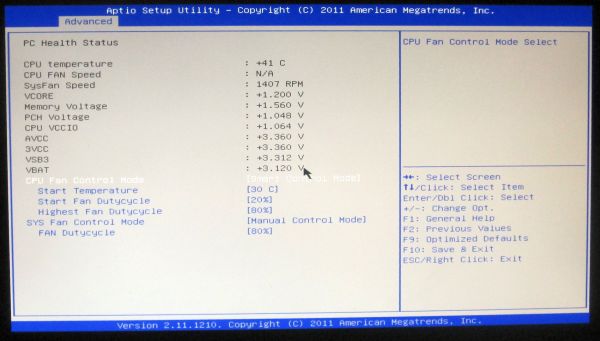
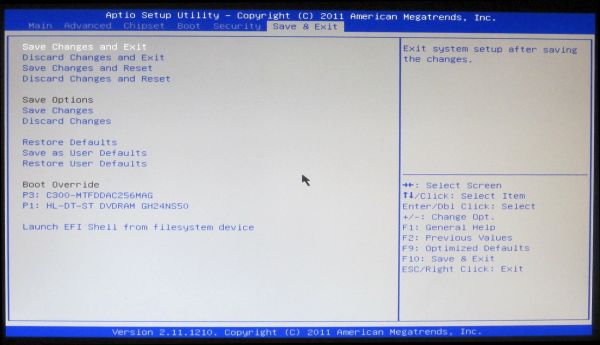














29 Comments
View All Comments
dac7nco - Thursday, September 22, 2011 - link
I think at this point Zotac has proven that they either don't care about proper MB design, or they just don't care. ASRock has a cheap mITX Z68 board... what was the problem in reviewing that? The fact that a reputable place like Anandtech goes anywhere near Zotac's boards makes me wonder.Daimon
EnzoFX - Thursday, September 22, 2011 - link
I agree, Zotac boards are overrated and overpriced. They care more about how their specs look on paper. Not a brand I'd recommend or read about in a review =P, unless they seriously step things up in regards to their BIOS and reliability.Ananke - Thursday, September 22, 2011 - link
I completely understand that this is a great, feature full board. However, in my sole opinion, it is too expensive for the targeted market. Why would somebody use this plus at least a $100 processor for a HTPC, when the same can be done with $300-$400 budget laptop /which comes with the Win OS btw/, or less than $100 AMD E-350 setup?Good for the consumer, since it offers a choice. I guess the same type of people who buy BMW Mini - an expensive pretend-to-be sport car, would buy this too.
DaveSimmons - Thursday, September 22, 2011 - link
The target is a small-form-factor _gaming_ PC not a simple HTPC -- for a HTPC you don't need Z68 to allow overclocking am i5-2500K. For pure HTPC use a H61/H67 motherboard and possibly nothing more than a socket 1155 Pentium CPU is enough.I wouldn't buy one that always runs my CPU out of spec though.
Ananke - Thursday, September 22, 2011 - link
Dave, small form factor gaming PC is an oxymoron. Where are you going to put a high end GPU card on this board? Playing WoW on integrated graphics is not "gaming" for God's sake. Hence my thought, for $170 this board is worthless. It might be interesting if it costs $70 or less.Mr Perfect - Thursday, September 22, 2011 - link
People build plenty of small form factor gaming PCs. Get yourself a Silverstone Sugo 5 or 7 case and you can put any dual slot card you want in it.Breathless - Thursday, September 22, 2011 - link
You don't know what you are talking about. I have this very board in a Lian Li PC-Q08B with an Asus GTX 580 Direct CUii, 2600k, 8GB's of ram and several SSD's. It is fully acceptable to say I have a small form factor gaming PC.DaveSimmons - Thursday, September 22, 2011 - link
As they said, Silverstone and Lian-li both make SFF gaming cases for mini-ITX, and you can put a GTX 560 ti or AMD 6870 in all of them, or even a higher-end card in a couple of them.You can even buy prebuilt gaming systems from CyberPowerPC in the SG07 case (LAN Party EVO Mini).
Times change, your SFF knowledge is a little out of date.
Rick83 - Thursday, September 22, 2011 - link
Gigabyte has been doing something similar on their Cougar Point boards all summer (now the first BIOS versions fixing this are finally coming out)There, once you enabled XMP, the CPU was automatically overclocked and overvolted using, afaik, the same turbo-tweak as on this Zotac.
Not sure what they've been thinking.
TrackSmart - Thursday, September 22, 2011 - link
I understand the need to have comparable test conditions for testing the performance of motherboards. That being said, it would be interesting to many of us to see what you can realistically get away with (in terms of a gaming PC) using this form factor and a small form factor case to match... Running at stock speeds, when gaming, would a decent SFF case be able to keep up with the heat of a Z68 processor plus a mid-range GPU? What about an overclocked Z68 plus whatever the most powerful GPU that would fit the case? Is this a viable platform for that kind of computing power to begin with? If not, then the overclocking results aren't very relevant to your testing.Keep up the good work on the motherboard reviews. And if it seems feasible, maybe you could cover some of the questions above in a "SFF/Mini-ITX gaming system" article. The key question being whether a SFF gaming rig is an oxymoron.